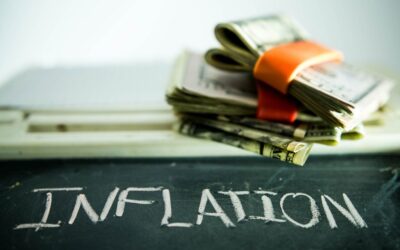
With 2024 marking a pivotal year for Europe and the many companies based here in terms of ESG, the Corporate Sustainability Reporting Directive (CSRD), sustainable finance, and the EU Taxonomy, today’s article examines Europe’s recent strides in sustainable finance and the key developments over the summer that are shaping this field.
The Draghi Report, published on September 17, 2024, by former European Central Bank President Mario Draghi, has brought renewed focus to sustainable finance and ESG (Environmental, Social, and Governance) regulations in the European Union. Commissioned by the European Commission, this report presents a sweeping analysis of Europe’s sustainable competitiveness and offers actionable recommendations. Its proposals for reform span EU governance, investment policy, and sustainable industry development, establishing a framework for rethinking ESG regulation to balance Europe’s competitiveness with its sustainability ambitions.
ESG: A Double-Edged Sword
The Draghi Report emphasizes Europe’s global leadership in clean technologies like wind turbines, electrolysers, and low-carbon fuels, noting that over 20% of the world’s clean technology innovations originate within the EU. This advantage presents an enormous opportunity for sustainable growth. However, the report warns that the EU’s competitive potential remains largely untapped, with critical challenges hindering progress. To overcome these barriers, the EU must prioritize closing the innovation gap with the United States and addressing its dependency on external players like China for critical materials and technology. Additionally, Draghi underscores the need for an EU-wide decarbonization plan that can drive competitiveness while minimizing risks to growth—a coordinated approach across member states is essential.
The Burden of ESG Overregulation
While the EU leads globally in setting sustainability standards, the Draghi Report identifies the complex and rapidly expanding regulatory landscape as a potential threat to European competitiveness. In contrast to the US, the EU has introduced a dense web of ESG-related regulations, including the Corporate Sustainability Reporting Directive (CSRD), the Taxonomy Regulation, the Sustainable Finance Disclosure Regulation (SFRD), and the Corporate Sustainability Due Diligence Directive (CSDDD), among others.
The CSRD, in particular, stands out as a significant regulatory burden. With compliance costs ranging from €150,000 for smaller companies to over €1 million for listed businesses, the CSRD has faced criticism for its extensive reporting requirements, which include over 1,000 data points, many of which are mandatory. Such a detailed reporting structure risks creating inefficiencies and diverting resources from innovation and competitiveness. Additionally, the EU Taxonomy Regulation, designed to guide sustainable investments, has faced challenges with its complex criteria and its application of the „do no significant harm“ principle. Draghi’s report thus calls for a simplification of these frameworks to foster a more balanced regulatory approach that supports sustainable growth without stifling competitiveness.
The Future of Sustainable Finance
The Draghi Report lays the groundwork for a “Clean Industrial Deal” that the European Commission is expected to advance in its upcoming term. Sustainable finance will play a central role in mobilizing the funds needed to achieve the EU’s ambitious climate and sustainability goals, including those outlined in the European Green Deal. The Green Deal’s investment plan aims to mobilize at least €1 trillion over the coming decade, with the ultimate objective of creating a climate-neutral, green, and inclusive European economy.
Sustainable finance, a broad term encompassing both green finance and social investments, guides the allocation of capital toward projects that consider ESG factors. Green finance, a subset of sustainable finance, prioritizes environmental objectives like biodiversity preservation, pollution reduction, climate adaptation, and circular economy initiatives. Meanwhile, sustainable finance as a whole incorporates not only environmental goals but also social aspects, such as human rights, labor standards, and governance practices, which include executive remuneration and corporate transparency.
The EU’s Commitment to Global Sustainable Finance Leadership
The EU has established itself as a major force in the global sustainable finance landscape. Through its collaboration on platforms like the G20 and the International Platform on Sustainable Finance, the EU is helping shape the future of sustainable finance standards worldwide. This commitment is further underscored by initiatives such as the EU Taxonomy for Climate Change, which sets clear criteria for environmentally sustainable activities, and the European Sustainability Reporting Standards (ESRS), which were advised by the European Financial Reporting Advisory Group (EFRAG). Together, these frameworks ensure that the EU’s sustainability goals are not only achieved within Europe but also contribute to a global transition towards more sustainable finance practices.
Moving Forward: Simplifying and Strengthening ESG Regulations
As Europe embarks on the journey toward a sustainable, competitive, and resilient economy, the Draghi Report serves as a reality check, highlighting the need to streamline ESG regulations while maintaining a high standard of sustainability. By reducing unnecessary compliance burdens, enhancing clarity in reporting standards, and creating a cohesive EU-wide strategy, the EU can leverage its strengths in sustainable finance to achieve both its Green Deal objectives and its competitiveness goals on the global stage. The implementation of Draghi’s recommendations will require close collaboration among EU institutions, member states, and the private sector, ensuring that Europe’s ambitious sustainability agenda becomes an engine of growth, resilience, and global leadership.
References
Driessen, M. (2024, September 26). The Draghi Report: a reality check for ESG regulation in the EU. Retrieved from Stibbe: https://www.stibbe.com/publications-and-insights/the-draghi-report-a-reality-check-for-esg-regulation-in-the-eu
European Environment Agency. (2024, August 28). Sustainable finance. Retrieved from European Environment Agency: https://www.eea.europa.eu/en/topics/in-depth/sustainable-finance?activeTab=e3e6b879-fef4-4a88-9436-5f0064698270
Photo:
https://www.asiapathways-adbi.org/wp-content/uploads/2023/02/central-banks-cover-768×473.png



